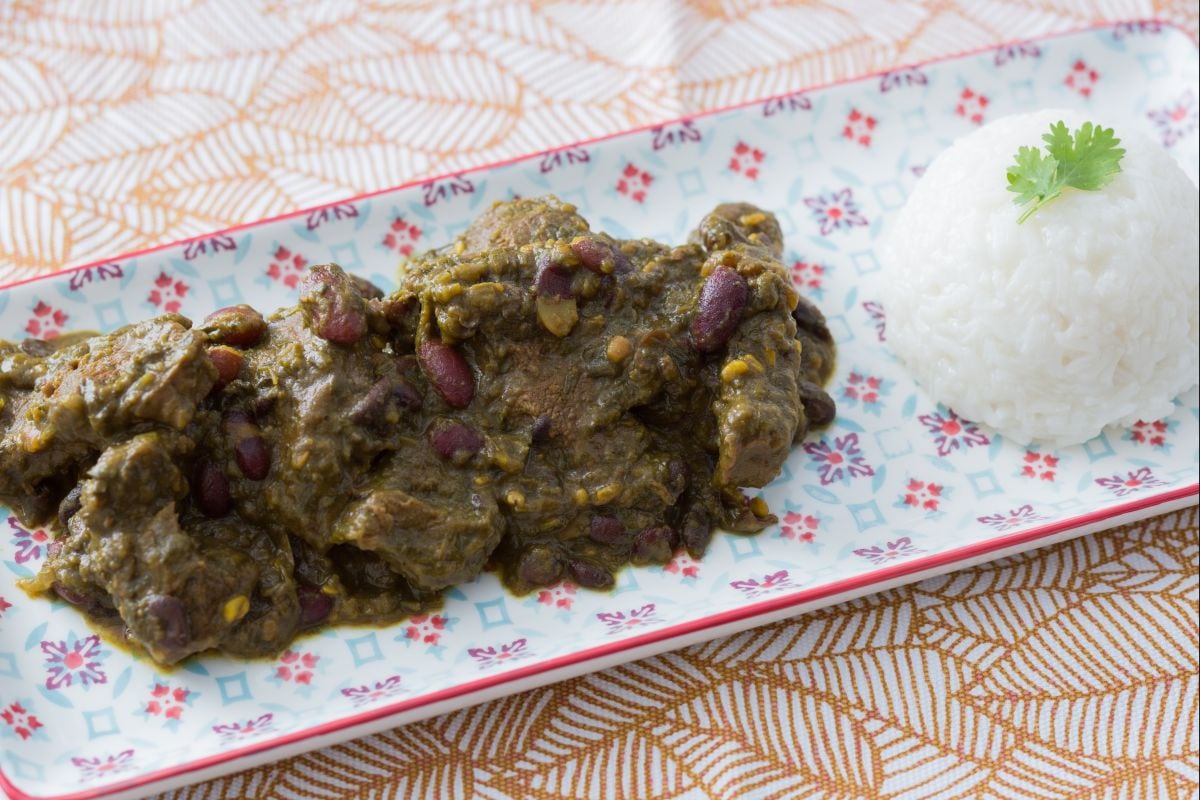Brown veal stock
- Average
- 3 h 30 min

Ghormeh Sabzi is a traditional Iranian dish that's all about capturing the rich flavors of ancient Persia. It’s a really tasty stew with herbs, meat and beans. Super delicious. You get a Persian herb stew that's both fragrant and comforting. The magic really happens when beef or lamb is slow-cooked until it's tender, letting the herbs fill the kitchen with a vivid aroma. Essential ingredients like parsley, cilantro, and chives give it a herby punch, making it one-of-a-kind.
And here's the thing: traditional recipes call for dried limes and fresh fenugreek. Can't find those? No problem. You can use lime zest and fenugreek seeds—which is great, keeping the spirit of the dish alive even if you can’t find every single original ingredient. The stew simmers with kidney beans, onions and a touch of turmeric, creating one deep, comforting experience.
Many see this ghormeh sabzi recipe as the heart of Persian home cooking—served at family gatherings or big celebrations. Each spoonful is a bit zesty and earthy, especially when you get a bite of those slow-cooked beans or citrusy lime. Traditionally, it’s paired with basmati rice—where the moist stew soaks into the grains—or with a simple Shirazi salad for a fresh contrast. Seriously good stuff.
While ghormeh sabzi with lamb is the classic choice, beef is also a popular option. Both versions end up rich and satisfying thanks to the long, slow cooking process. No matter where you are, the heart of this Persian herb stew stays the same—a generous amount of herbs, a mix of tangy and savory flavors, and a cooking method that blends everything beautifully. This dish is all about bringing people together with its deep roots in Persian tradition. Pretty much an easy favorite around the world.
You might also like:

To prepare the ghormeh sabzi, first cut the piece of meat into slices 1-1.5 inches thick 1, then cut them into cubes 2. Peel the red onions and slice them thinly 3.

Wash and finely slice the green part of the leek 4, then do the same with the green part of the scallions 5. Finally, wash and chop both the parsley 6

and the cilantro 7 and set aside the mix of herbs, leeks, and scallions in a bowl. Heat the oil in a large pot, add the onion 8 and sauté for a few minutes until it is wilted 9.

At this point, add the meat and brown it over medium heat, stirring with a wooden spoon to prevent it from sticking 10. Add the salt 11 and turmeric 12 and stir again.

Add the dried beans 13 and 4 cups of water 14, then cover with a lid 15 and let cook for about 20 minutes.

Meanwhile, heat a drizzle of oil in another pan and toast the fenugreek seeds for a couple of minutes 16, then add the mix of herbs, leeks, and scallions that you had set aside 17 and let cook over medium heat during the 20 minutes of cooking the meat 18.

After this time, add the cooked herbs to the pot with the meat 19, then also add the lime zest 20 and juice 21.

Cover with the lid 22 and cook over medium-low heat for at least 3 hours, until the stew becomes thick and creamy 23. Serve your ghormeh sabzi accompanied with steamed basmati rice 24!